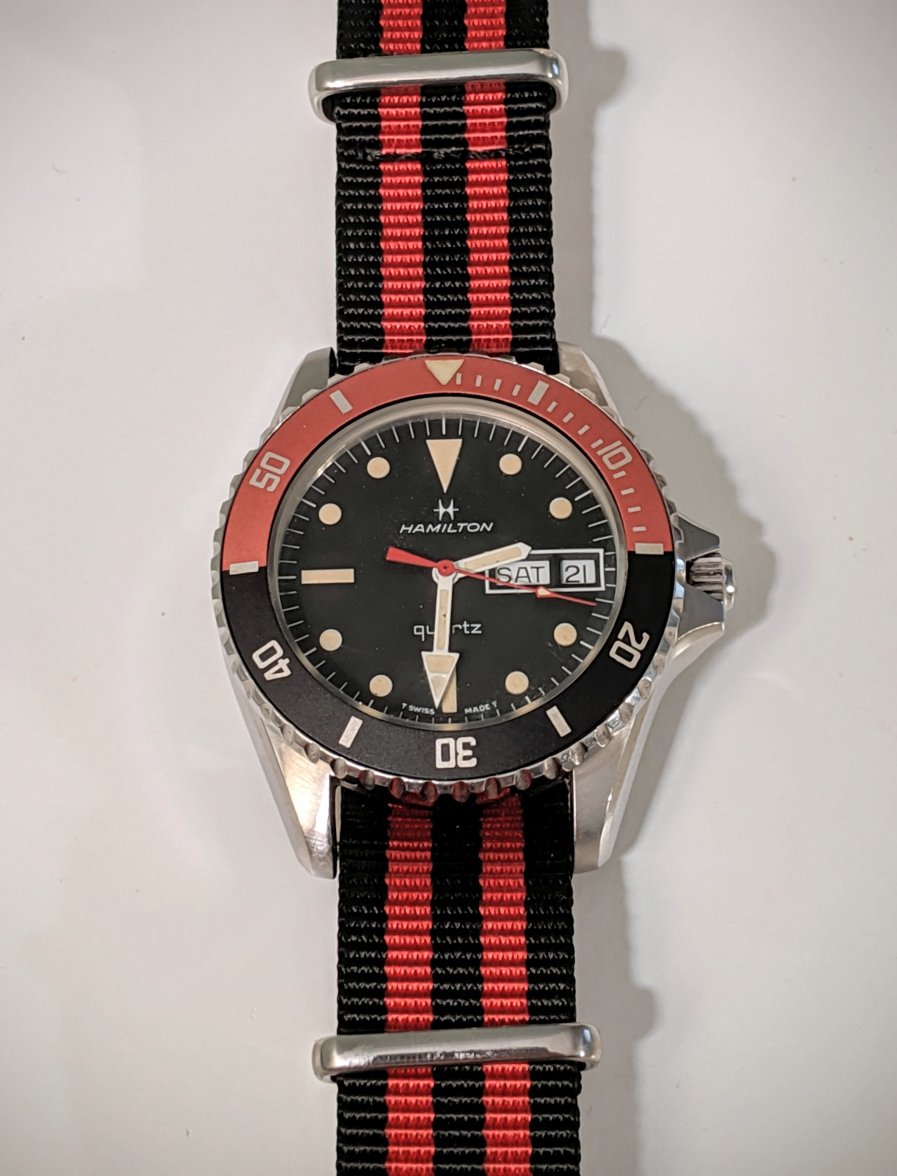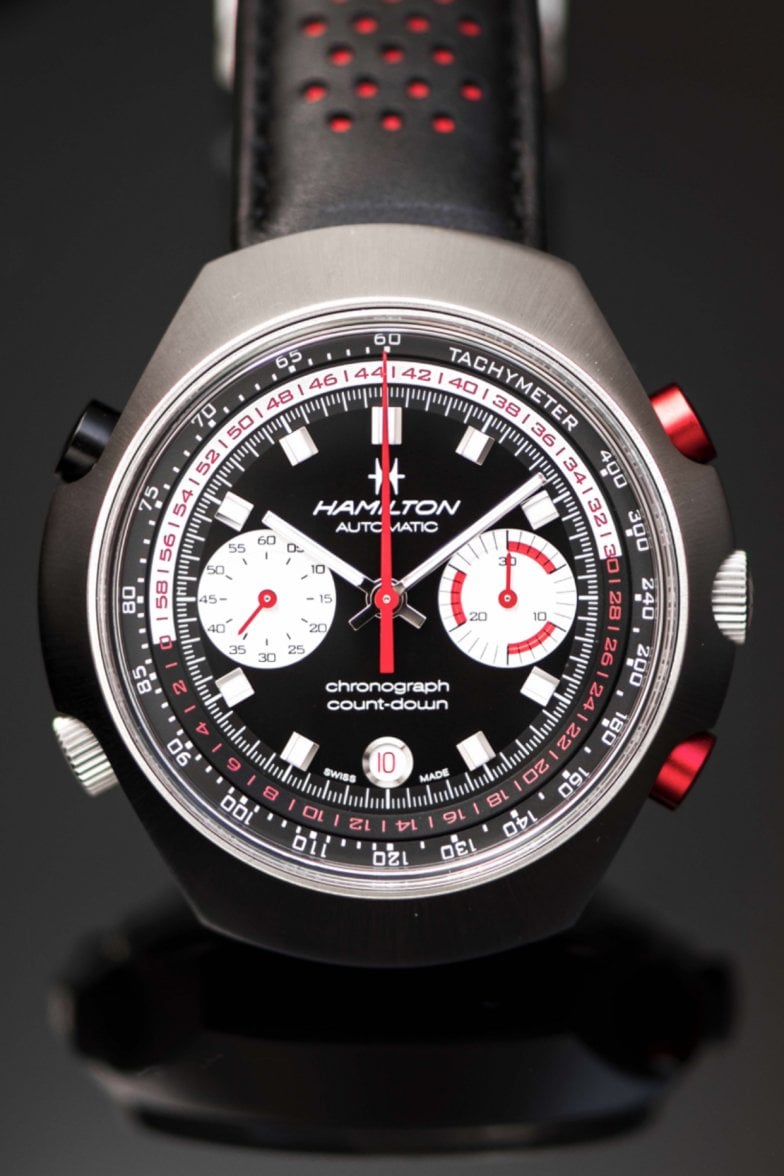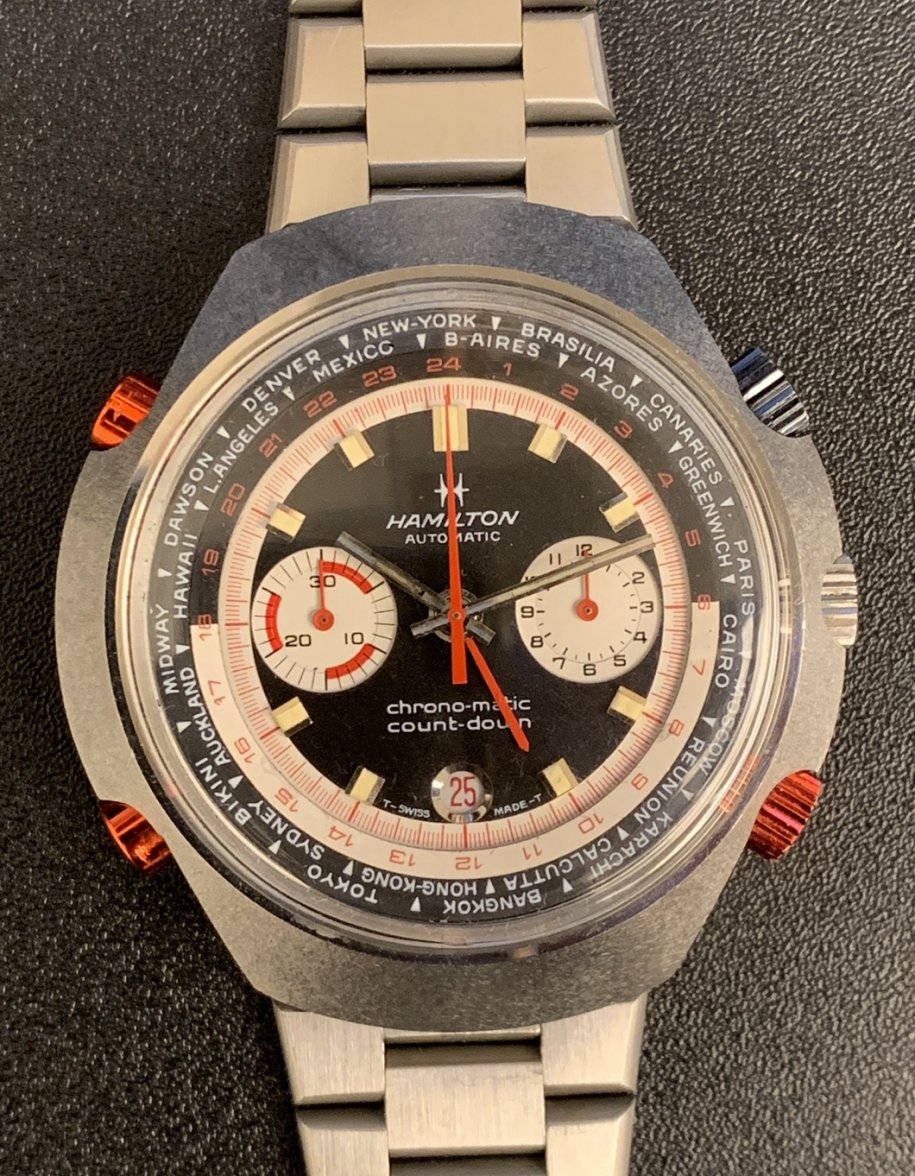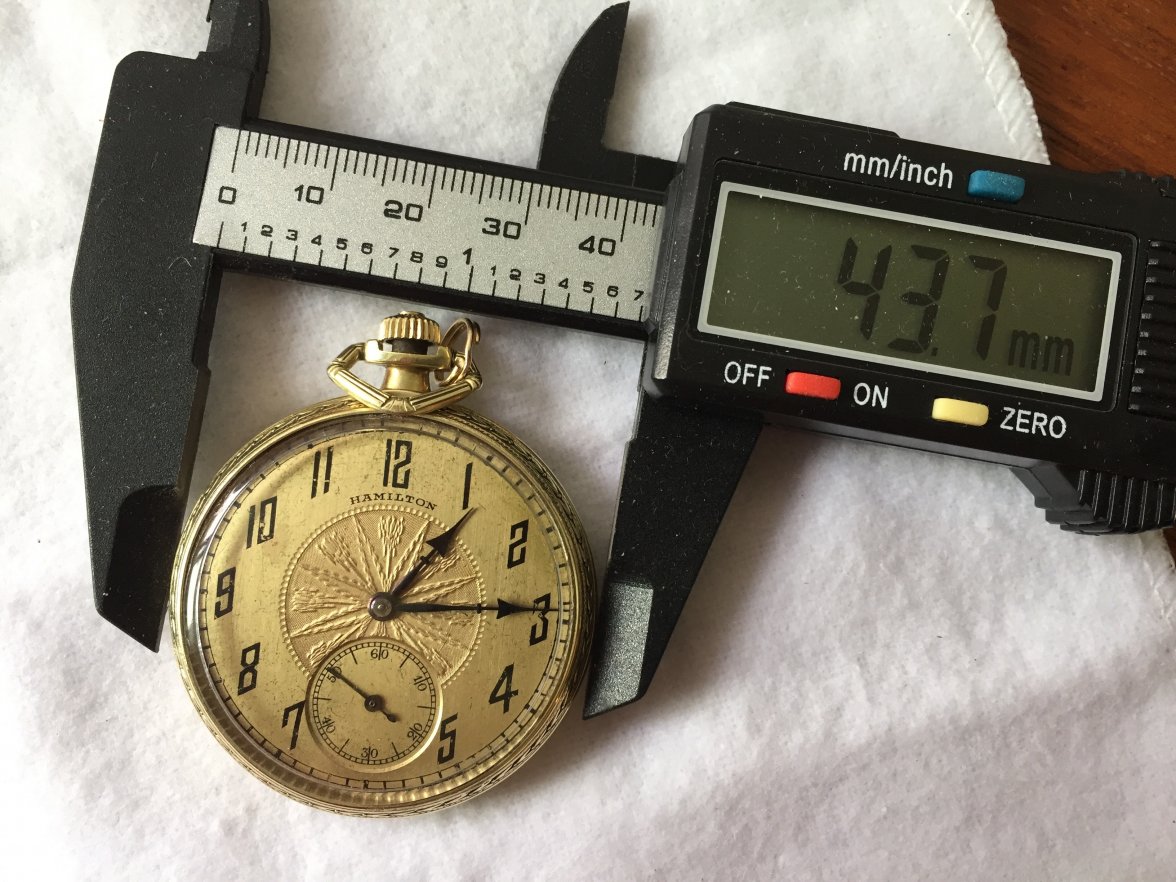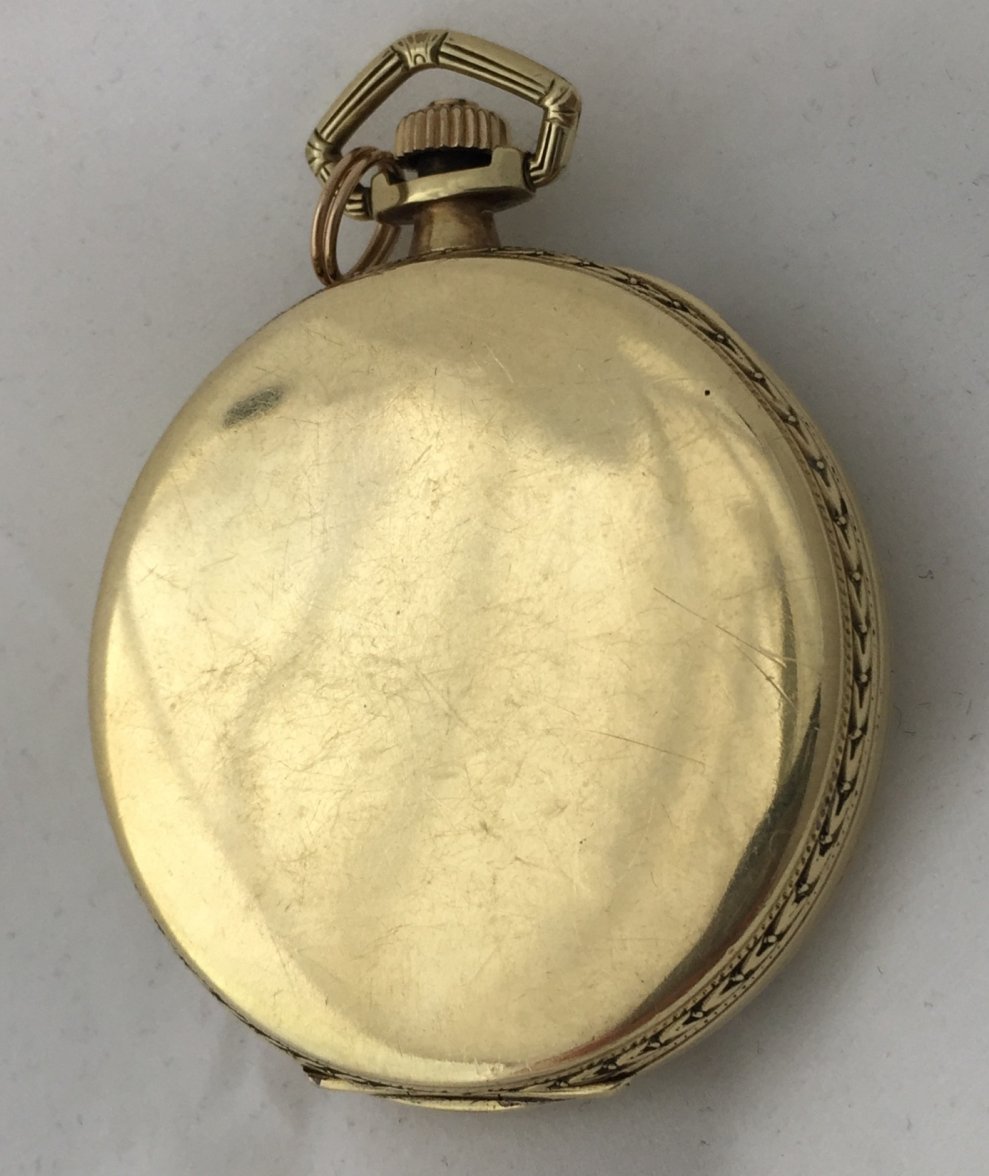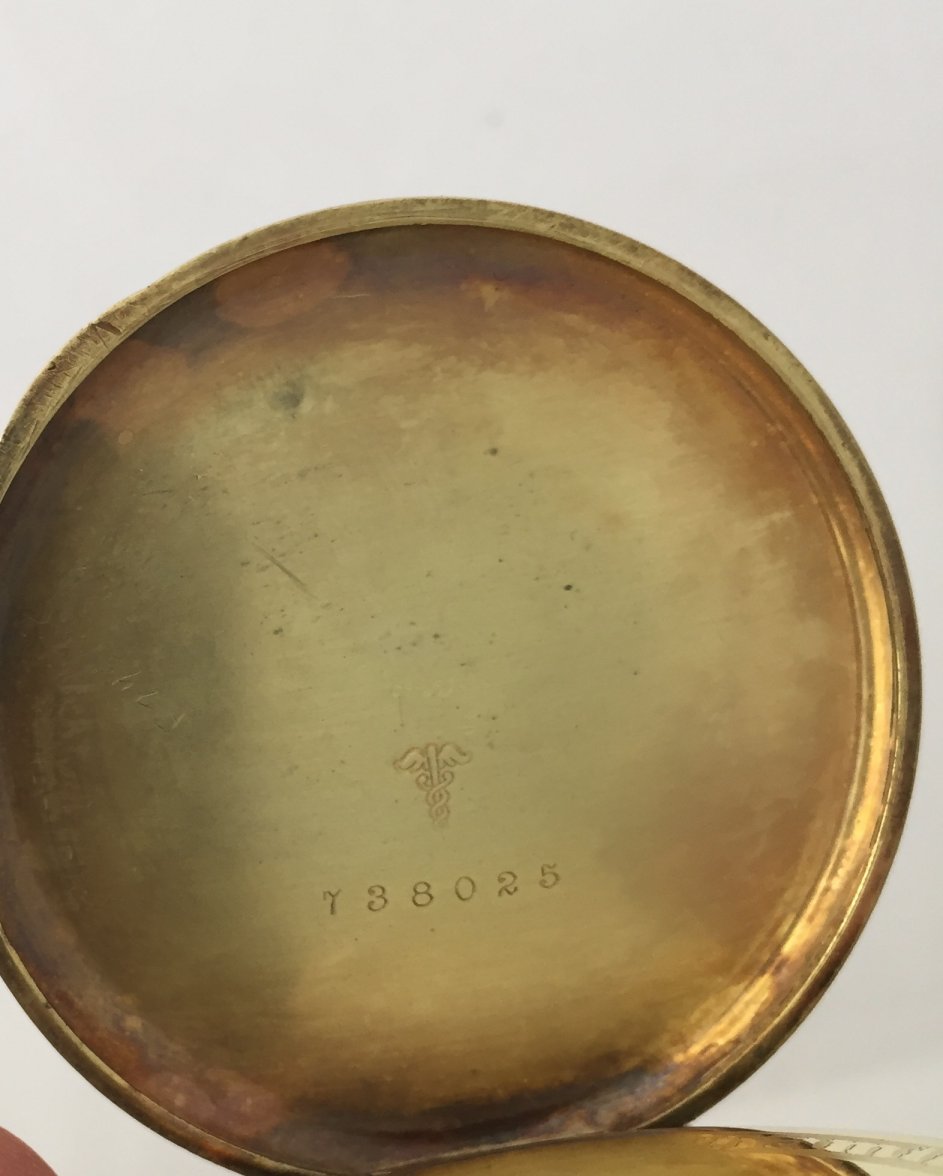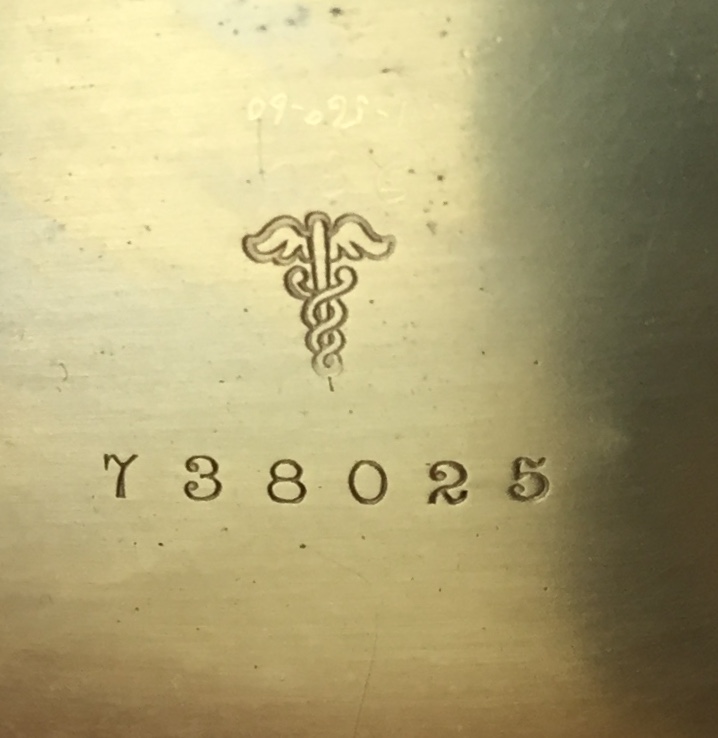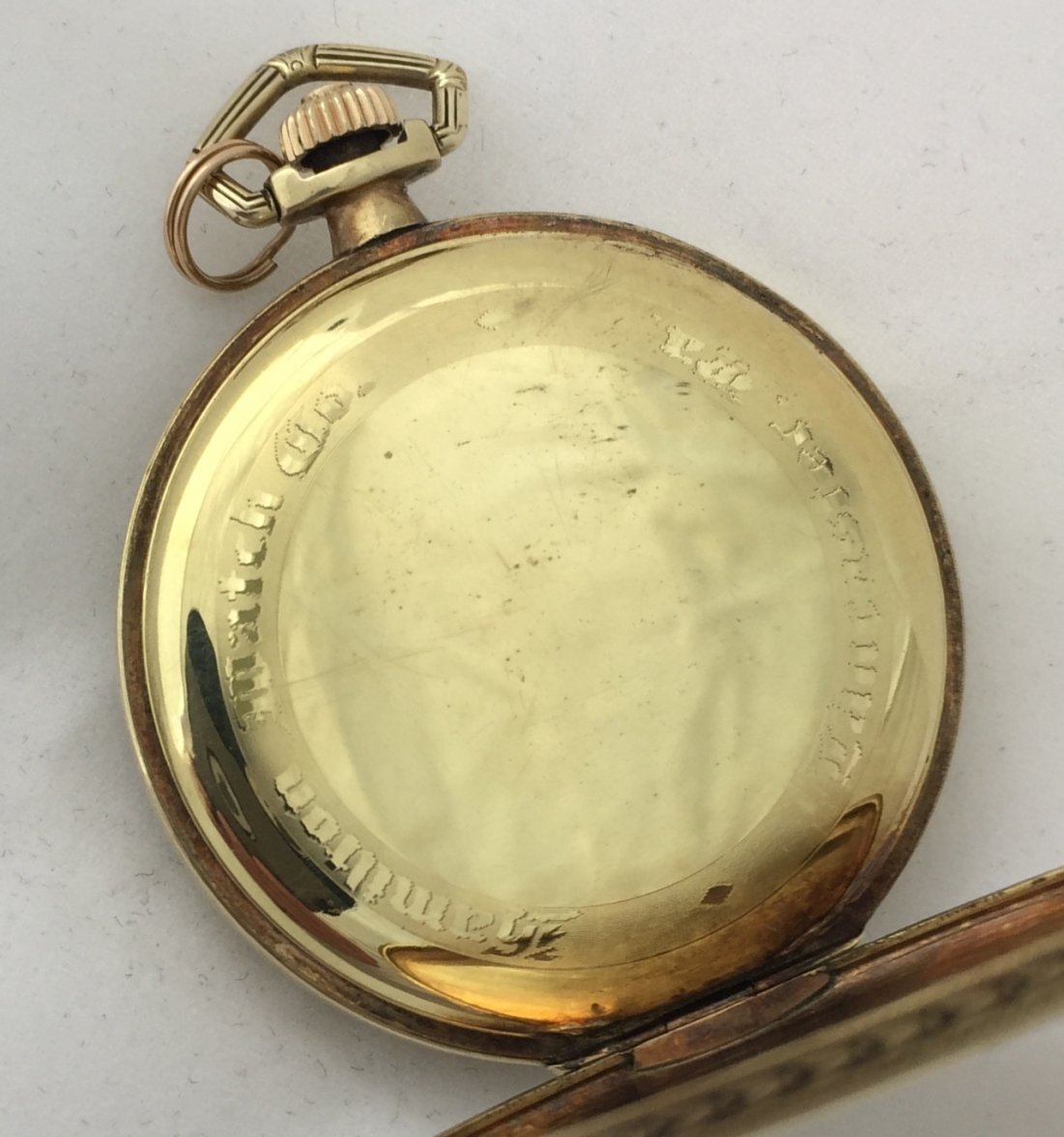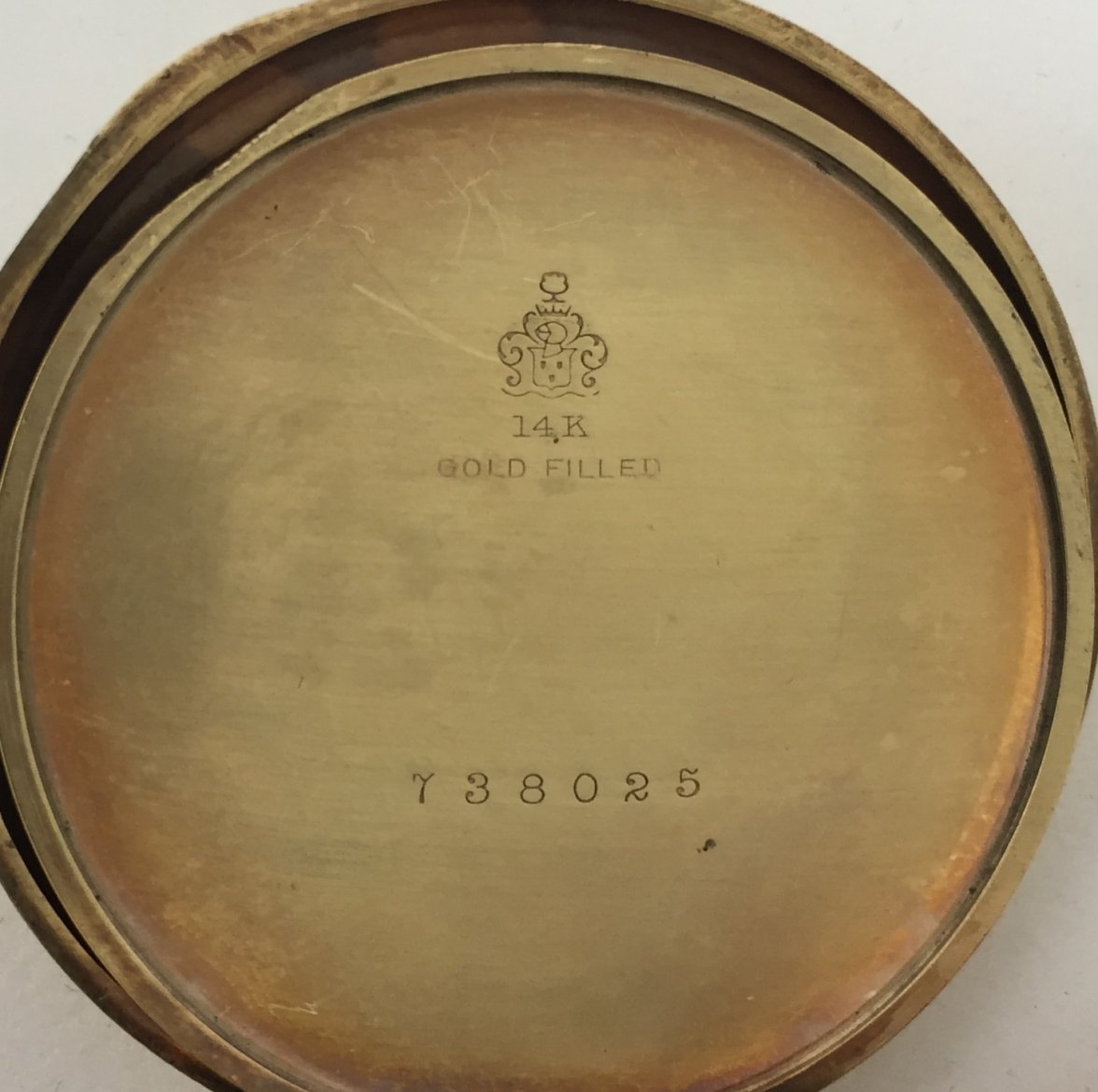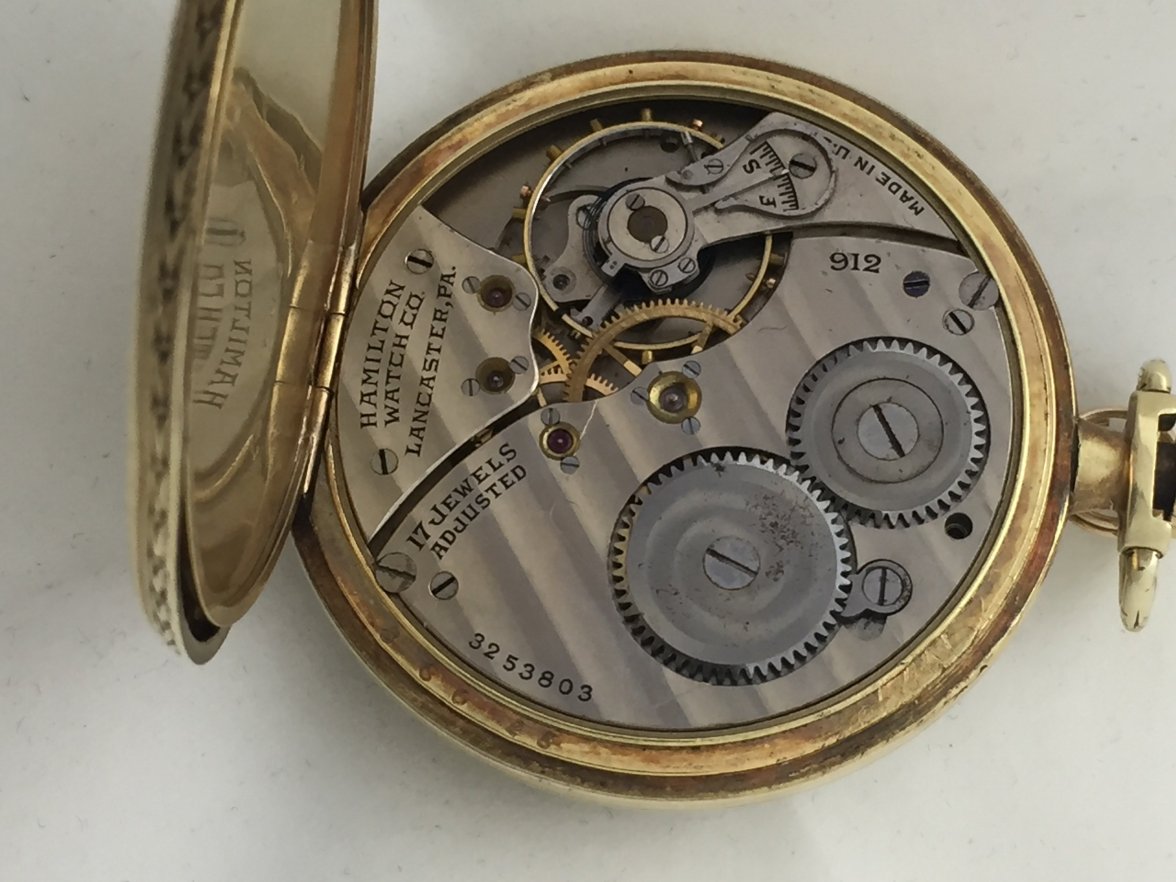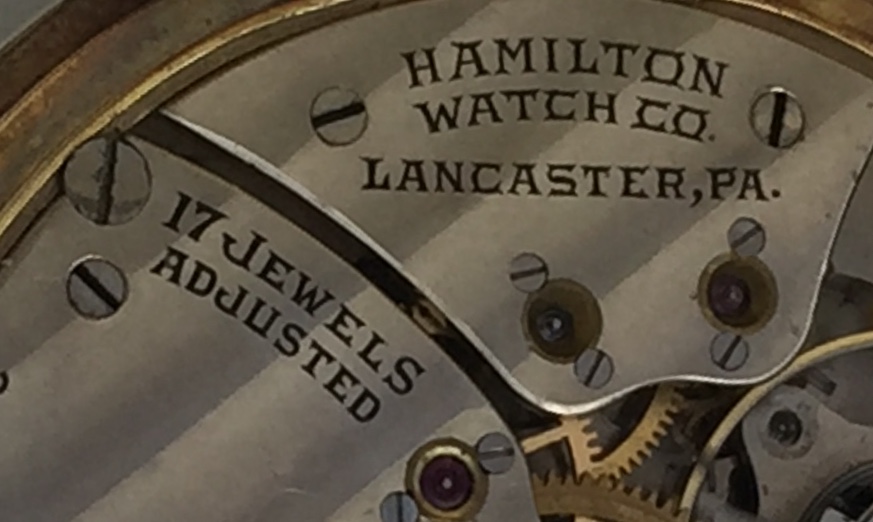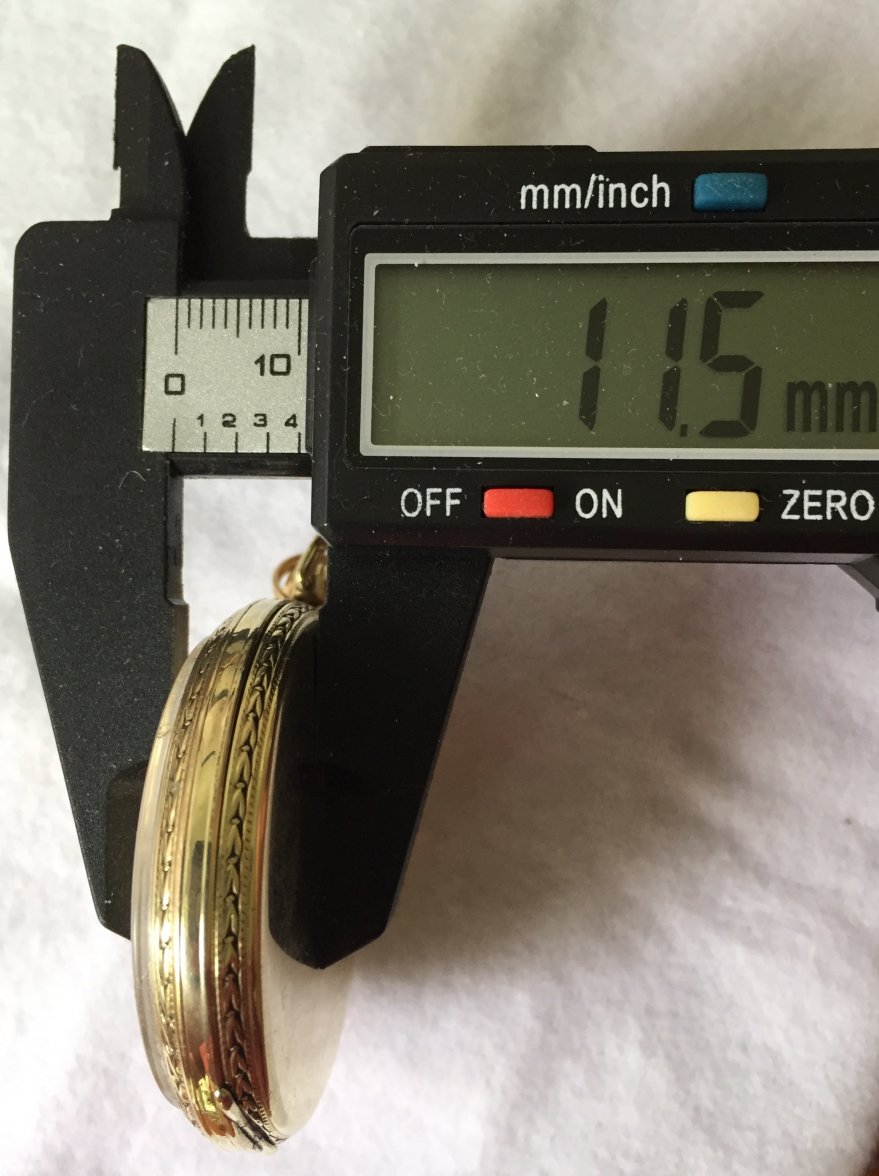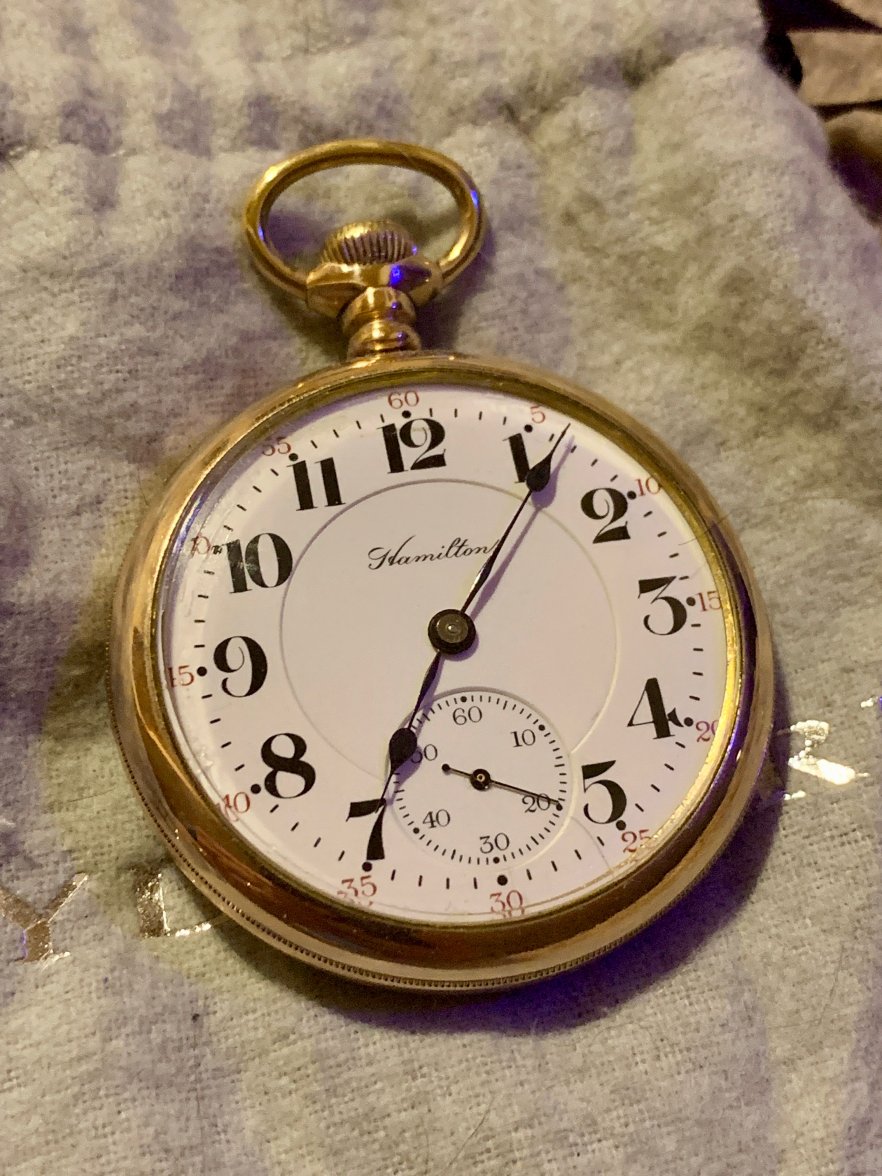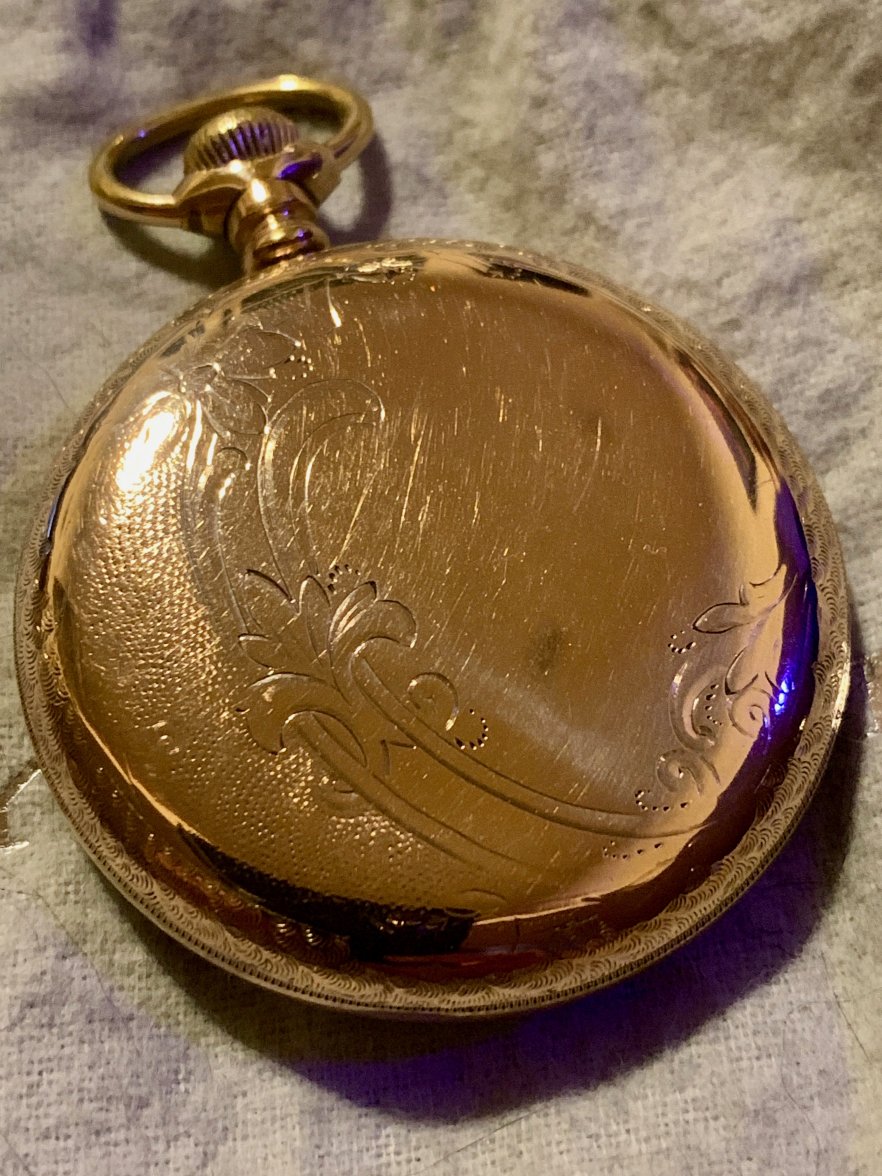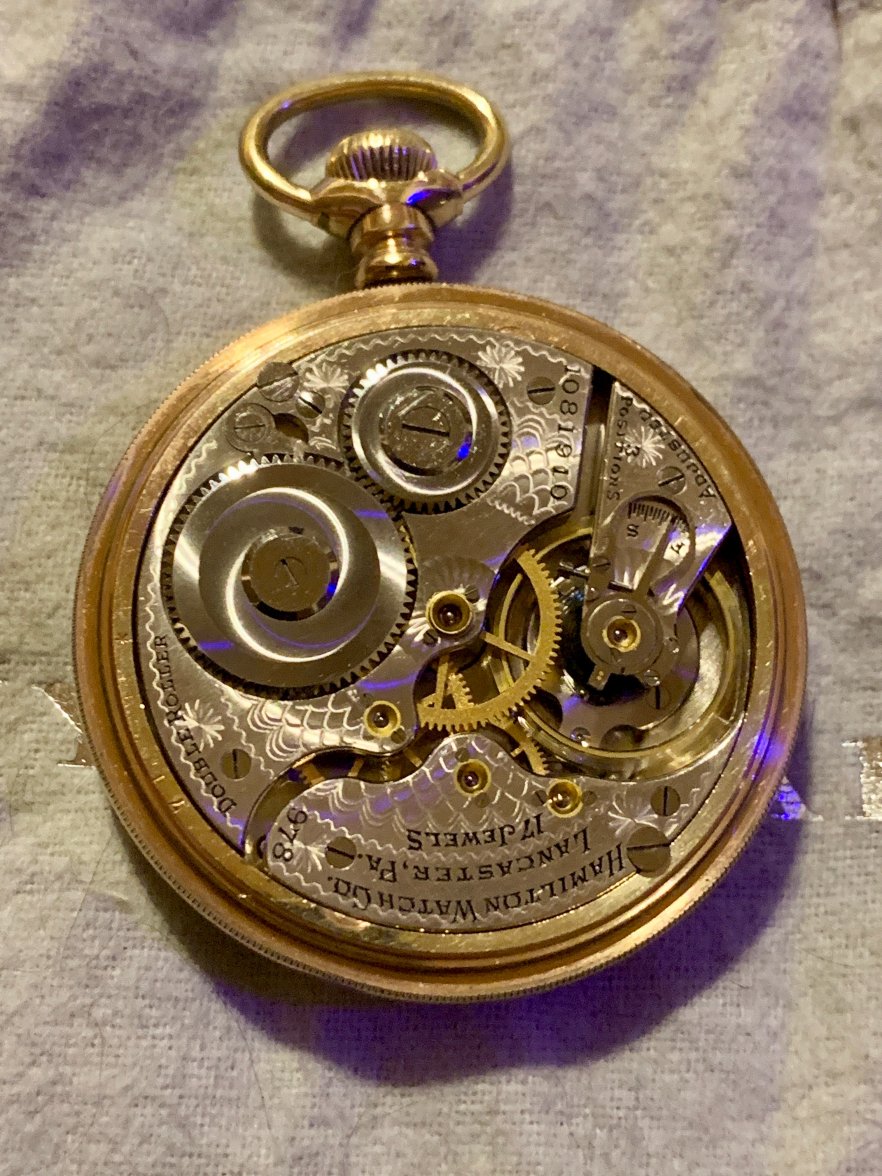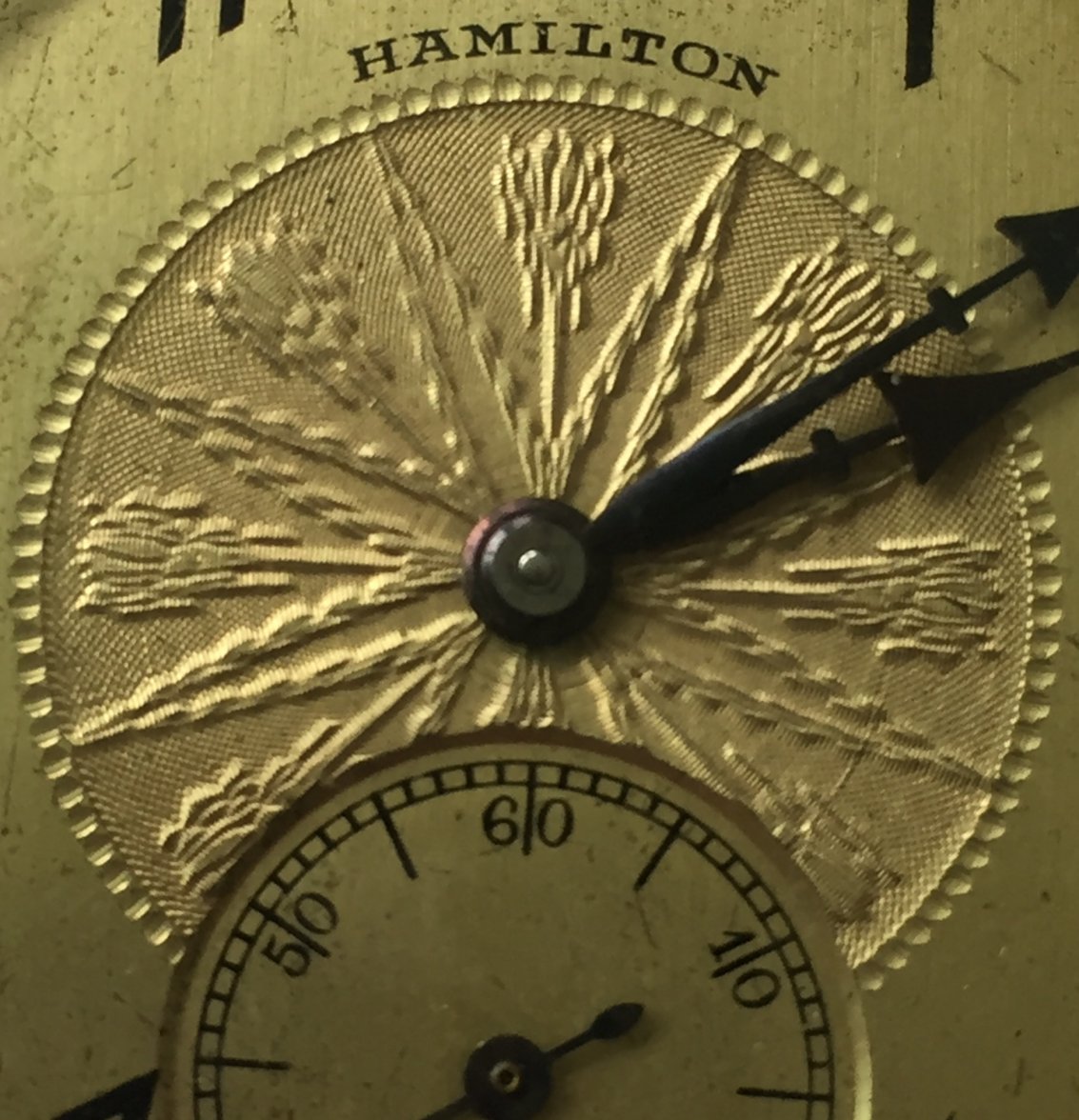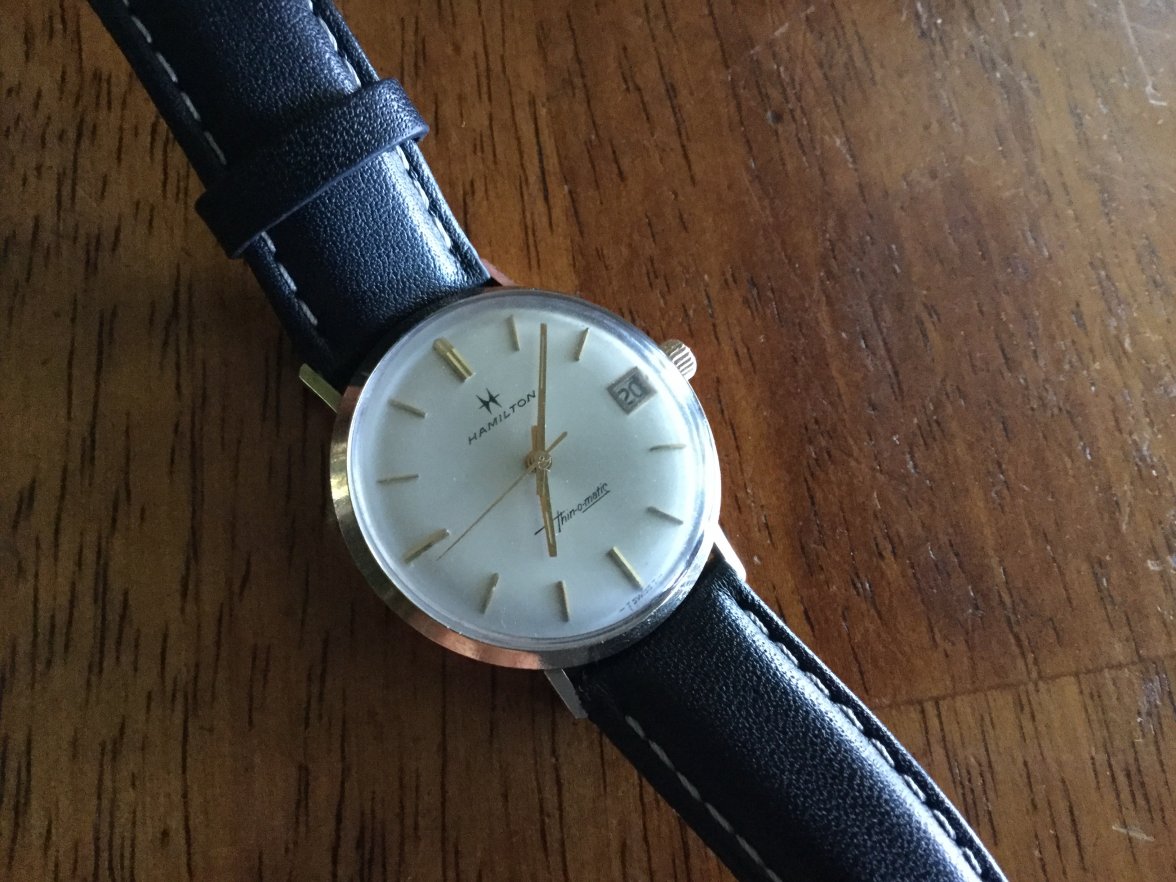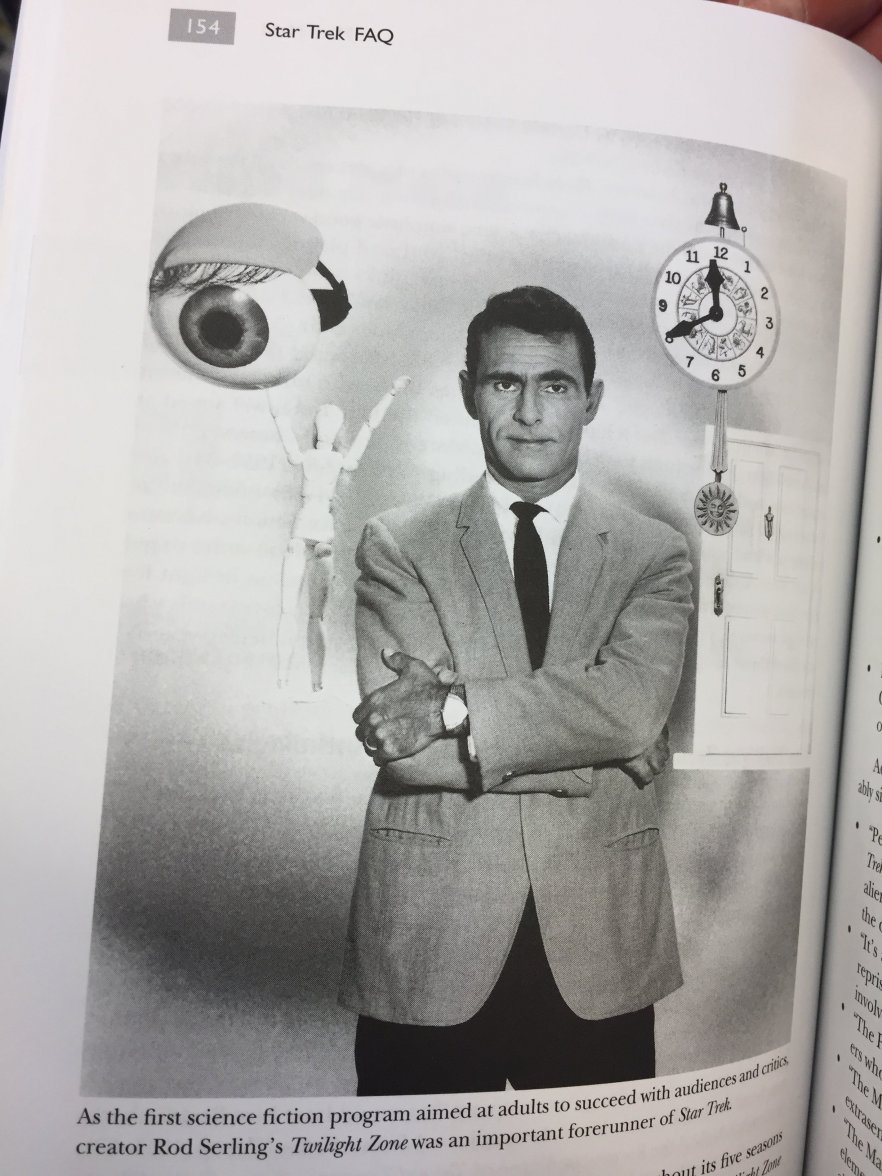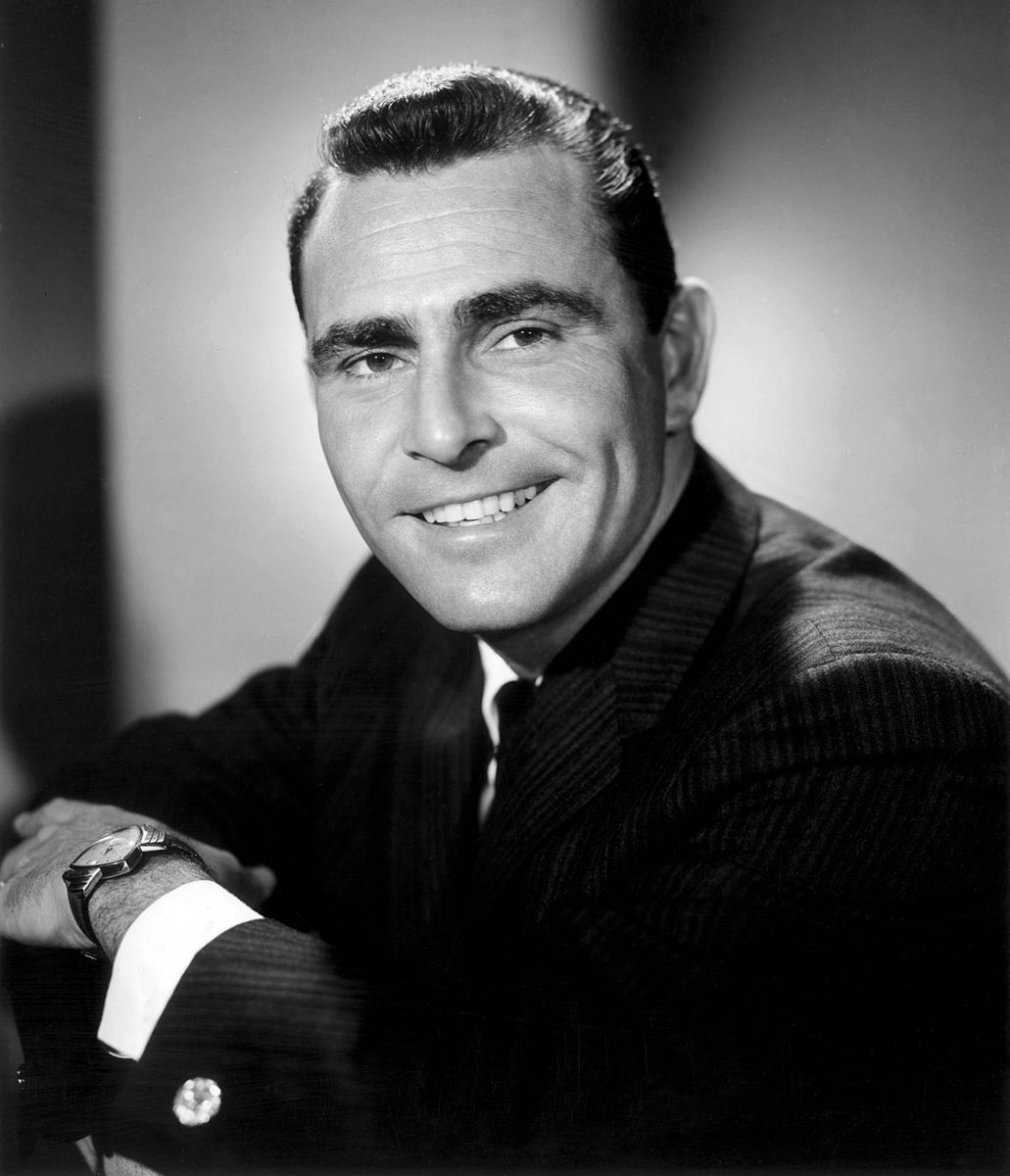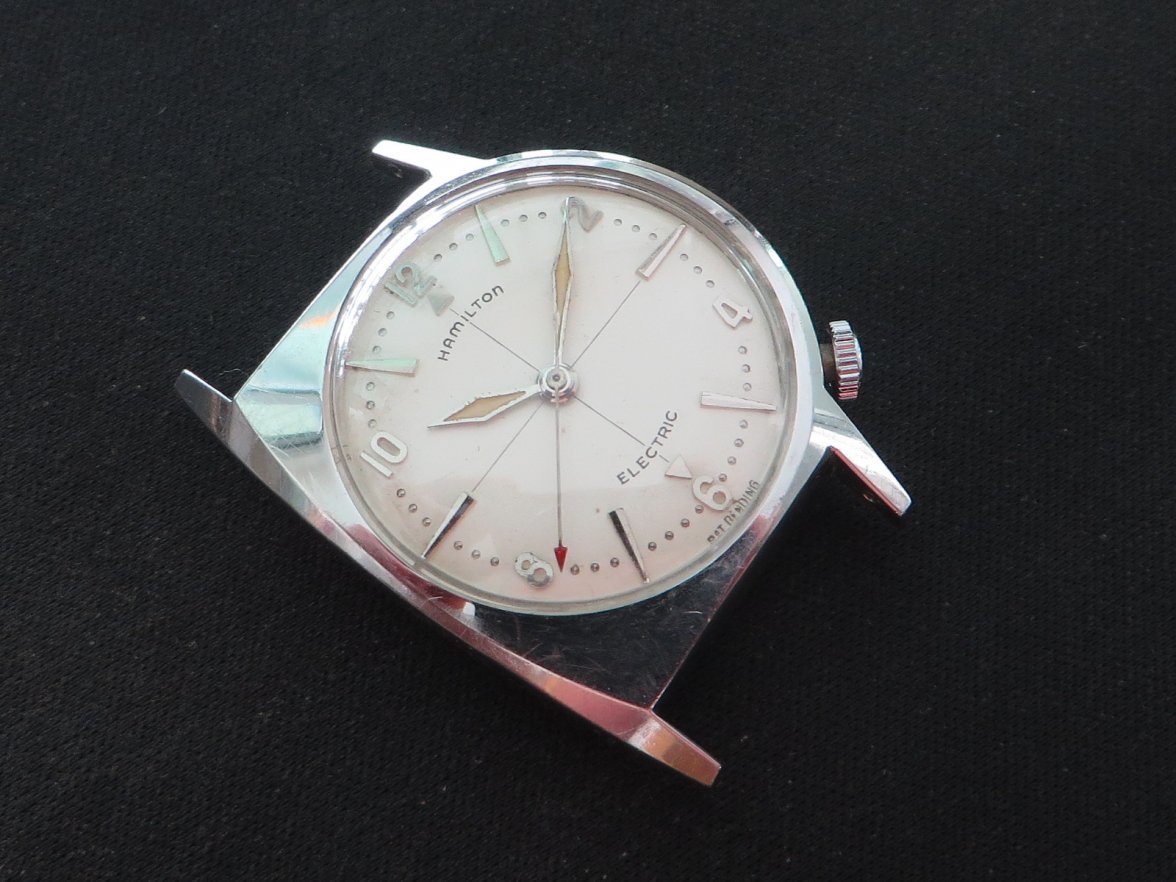This just arrived in the mail, my new-to-me 1924 Hamilton 912 gentlemen’s dress pocket watch.
 View attachment 841519
View attachment 841519
One of 260,900 of these cal 912, size 12s movements made, this piece was sent to the Hamilton finishing department on Saturday, October 25, 1924
Fun Facts
- Art Deco engraved dial
- 14k gold filled case
- 17 jewels
- Adjusted mvmt
- Blued steel hands that are too maddeningly shy to show on photos
- Curious doctor’s logo inside the case back
Case back
Dust cover
The engine
I gave it four turns to the crown and set the time last night, and it ran keeping near-perfect time for 18 hours. Can I have a hell-yah!? Pretty exciting and excellent for a piece that turns 95 next month. There are three watchmaker’s service marks inside the case, so it has seen some attention over the years. I will get it serviced before next using it.
This is my first “real” pocket watch, and here is what I have learned:
When this watch was made circa 1924, thin was in. Pocket watches were then toward the end of a long swing in consumers’ size preferences. In the beginning there were huge 18-size full-plate pocket watches in beefy cases, and all was good. But then tastes changed to the smaller 16-size, and 18s never recovered their popularity. One assumes that this excludes railroad approved watches, that by regulation needed to be the larger size.
With the change in diameter came a change in thickness. Many companies—Gruen being foremost—used thinness as a selling point, and consumers responded. As noted above, this watch is a 12s size Hamilton 912, which reflects this trend in sizes. Intended for everyday users, rather than railroad workers, this watch is slim and compact.
The cal 912 was the "entry level" Hamilton dress pocket watch. It's a nice movement but they made so many of them that they're ubiquity is apparently not prized by collectors. On the bright side, there are had at lower prices and have lots of spare parts. For collecting purposes however, there are so many of them out there and so many different case, dial and hand options, that one could assemble an impressive collection if they really had an interest in doing so.
During the 1920s the folks at Hamilton replaced their 910 with the less elaborately finished and therefore less expensive to produce 912 which is also a thinner, more modern style movement. By that time Gruen had made marketing inroads with their "Veri-Thin" and a "thinner" movement was a better-selling movement, all the companies were pushing "thin" gentlemen's dress watches. That is also a big reason Hamilton eventually dropped all their 12-size and went to a 10-size movement for 1936 and subsequently. Part of that prevailing trend was the unfortunate evolution of the damaskeening to plain straight-line patterns.
If you are still awake, I do have some questions for the hive:
- there is a matching serial number (738025) on the case back and dust cover that I cannot find online to validate. Do we know if the case is original to the watch?
- There is a number on the edge of the case, directly next to the movement serial # (88625?) should this correspond to any other serials on this watch?
- What is the engraving on the dial, wheat?
- And the doctor’s logo, any ideas on the background there? If it belonged to a doctor I’d think the logo would be engraved on the back of the case, or maybe this was issued by a hospital or medical association?
Many thanks in advance
👍
Plagiarized sources 📖 include
http://www.hamiltonchronicles.com/2014/01/1933-912-pocket-watch-overhaul.html?m=1
https://adjustingvintagewatches.com/adjusting-hamilton-912-pocket-watch/
https://ihc185.infopop.cc/eve/forum...&f=1086047761&a=tpc&m=5073967957&s=3206049661
https://pocketwatchdatabase.com/
